Volume 9-14 (2020-26)
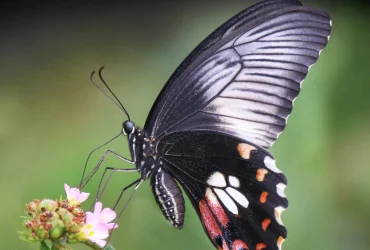 v10i2.257
v10i2.257ISSN: 1800-427X (printed)
eISSN: 1800-427X (online)
DOI:10.47605/tapro.v10i2.257
Submitted date: 19 September 2021
Accepted date: 6 November 2021
Published date: 22 November 2021
Pp. 89–120, pls. 18–25.
TAXONOMIC COMPOSITION OF THE Rhabdophis subminiatus (SCHLEGEL, 1837) SPECIES COMPLEX (REPTILIA: NATRICIDAE) WITH THE DESCRIPTION OF A NEW SPECIES FROM CHINA
Patrick David & Gernot Vogel*
*Corresponding author. E-mail: gernot.vogel@t-online.de
Abstract
The systematics of Rhabdophis subminiatus (Schlegel, 1837) at subspecies level has long proved to be controversial. We analyse the variation of selected morphological characters in 179 specimens from populations covering the whole range of R. subminiatus sensu lato. Based on this review, we recognize four morphological groups, of which two do not agree with the current definitions and distributions of the currently recognized subspecies R. s. subminiatus. The “northernmost group” agrees with the definition of Natrix helleri Schmidt, 1925. In contrast, the “southernmost group” agrees with the syntypes of Tropidonotus subminiatus and we here restrict this species to the Sunda Region. We also discuss a previous designation of the lectotype of T. subminiatus, which we consider invalid, and we here make it valid in the sense of the Code. Furthermore, our analysis allows us to define a third group that is widespread in the Indochinese Region and Malayan Peninsula. For this geographically “central group”, the name Natrix subminiata siamensis Mell, 1931, is available. We therefore resurrect this taxon from its synonymy with R. subminiatus and we designate a lectotype in agreement with requirements of the Code. Lastly, we recognize a fourth group at species level, endemic to Hainan Island, China, that we describe as a new species. This division into four morphological groups at species level is coherent with phylogenetic analyses recently published in the literature. We also discuss and modify the taxonomic status of Natrix subminiata hongkongensis Mell, 1931 and Natrix (Rhabdophis) laobaoensis Bourret, 1934, now regarded as synonyms of R. subminiatus and R. siamensis, respectively.
Key words : Asia, Hainan, lectotype, morphological variation, Natricidae, Natrix, Serpentes, taxonomy
Section Editor: Thasun Amarasinghe
LSID:urn:lsid:zoobank.org
eISSN: 1800-427X (online)
DOI:10.47605/tapro.v10i2.257
Submitted date: 19 September 2021
Accepted date: 6 November 2021
Published date: 22 November 2021
Pp. 89–120, pls. 18–25.
TAXONOMIC COMPOSITION OF THE Rhabdophis subminiatus (SCHLEGEL, 1837) SPECIES COMPLEX (REPTILIA: NATRICIDAE) WITH THE DESCRIPTION OF A NEW SPECIES FROM CHINA
Patrick David & Gernot Vogel*
*Corresponding author. E-mail: gernot.vogel@t-online.de
Abstract
The systematics of Rhabdophis subminiatus (Schlegel, 1837) at subspecies level has long proved to be controversial. We analyse the variation of selected morphological characters in 179 specimens from populations covering the whole range of R. subminiatus sensu lato. Based on this review, we recognize four morphological groups, of which two do not agree with the current definitions and distributions of the currently recognized subspecies R. s. subminiatus. The “northernmost group” agrees with the definition of Natrix helleri Schmidt, 1925. In contrast, the “southernmost group” agrees with the syntypes of Tropidonotus subminiatus and we here restrict this species to the Sunda Region. We also discuss a previous designation of the lectotype of T. subminiatus, which we consider invalid, and we here make it valid in the sense of the Code. Furthermore, our analysis allows us to define a third group that is widespread in the Indochinese Region and Malayan Peninsula. For this geographically “central group”, the name Natrix subminiata siamensis Mell, 1931, is available. We therefore resurrect this taxon from its synonymy with R. subminiatus and we designate a lectotype in agreement with requirements of the Code. Lastly, we recognize a fourth group at species level, endemic to Hainan Island, China, that we describe as a new species. This division into four morphological groups at species level is coherent with phylogenetic analyses recently published in the literature. We also discuss and modify the taxonomic status of Natrix subminiata hongkongensis Mell, 1931 and Natrix (Rhabdophis) laobaoensis Bourret, 1934, now regarded as synonyms of R. subminiatus and R. siamensis, respectively.
Key words : Asia, Hainan, lectotype, morphological variation, Natricidae, Natrix, Serpentes, taxonomy
Section Editor: Thasun Amarasinghe
LSID:urn:lsid:zoobank.org
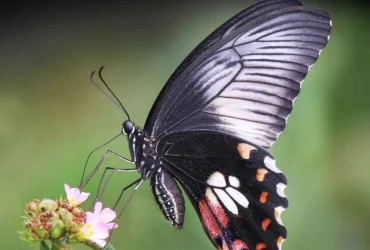 v10i2.256
v10i2.256ISSN: 1800-427X (printed)
eISSN: 1800-427X (online)
DOI:10.47605/tapro.v10i2.256
Submitted date: 25 July 2021
Accepted date: 26 October 2021
Published date: 22 November 2021
Pp. 84–88, pl. 17.
RELATIONSHIP BETWEEN PUPAL COLOUR AND SEX RATIO OF THE COMMON MORMON, Papilio polytes romulus CRAMER, 1775 (INSECTA: LEPIDOPTERA), SRI LANKA
D. Eranda. N. Mandawala* & P.A.D. Mokshi V. Perera
*Corresponding author. E-mail: nipunika001@gmail.com
Abstract
A free ranging female common Mormon (Papilio polytes romulus) butterfly was observed laying eggs on a Citrus aurantiifolia (Family: Rutaceae) plant in a home garden in Battaramulla. 16 eggs were collected and reared in the lab. The duration and measurements of each stage were recorded. After eclosion the sex and wingspan of all adult butterflies were recorded and they were released back to the wild. Pupae were observed in two colours: green and brown. Out of 16 pupae, 12 were green (75%) and four were brown (25%). The four brown pupae gave rise to two males (50%) and two females (50%). The 12 green pupae gave rise to 10 males (83%) and two females (17%). The sex ratios regardless of the pupal colour showed male dominance with 12 males (75%) and four females (25%). All four females were of the romulus form. A strong relationship between pupal colour and substrate texture was observed, but no relationship between pupal colour, sex and sex ratios was seen.
Key words : sex ratio, male dominance, Papilionidae, pupal colour, sexual dimorphism
Section Editor: Himesh D. Jayasinghe
eISSN: 1800-427X (online)
DOI:10.47605/tapro.v10i2.256
Submitted date: 25 July 2021
Accepted date: 26 October 2021
Published date: 22 November 2021
Pp. 84–88, pl. 17.
RELATIONSHIP BETWEEN PUPAL COLOUR AND SEX RATIO OF THE COMMON MORMON, Papilio polytes romulus CRAMER, 1775 (INSECTA: LEPIDOPTERA), SRI LANKA
D. Eranda. N. Mandawala* & P.A.D. Mokshi V. Perera
*Corresponding author. E-mail: nipunika001@gmail.com
Abstract
A free ranging female common Mormon (Papilio polytes romulus) butterfly was observed laying eggs on a Citrus aurantiifolia (Family: Rutaceae) plant in a home garden in Battaramulla. 16 eggs were collected and reared in the lab. The duration and measurements of each stage were recorded. After eclosion the sex and wingspan of all adult butterflies were recorded and they were released back to the wild. Pupae were observed in two colours: green and brown. Out of 16 pupae, 12 were green (75%) and four were brown (25%). The four brown pupae gave rise to two males (50%) and two females (50%). The 12 green pupae gave rise to 10 males (83%) and two females (17%). The sex ratios regardless of the pupal colour showed male dominance with 12 males (75%) and four females (25%). All four females were of the romulus form. A strong relationship between pupal colour and substrate texture was observed, but no relationship between pupal colour, sex and sex ratios was seen.
Key words : sex ratio, male dominance, Papilionidae, pupal colour, sexual dimorphism
Section Editor: Himesh D. Jayasinghe
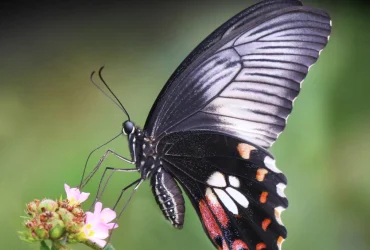 v10i2.255
v10i2.255ISSN: 1800-427X (printed)
eISSN: 1800-427X (online)
DOI:10.47605/tapro.v10i2.255
Published date: 22 November 2021
Pp. 80–83
EDITORIAL : A research priority for biodiversity conservation
Chris Margules
Deputy Editor: Taprobanica, the journal of Asian Biodiversity
Conservation biology emerged as a scientific discipline in the mid-1980s with the explicit practical goal of conserving species and habitats. The term ‘biodiversity’ was coined soon after, apparently at some time during the organization of the September 1986 National Forum on Biodiversity held by the US National Academy of Sciences and the Smithsonian Institution. The science of conservation biology was quickly taken up. Journals proliferated and textbooks soon followed. Laboratories within university biology and ecology departments specialized in conservation biology. Along with a great many other young biologists and ecologists, I climbed the moral high ground and set about research to help change the future by discovering how to protect biodiversity.
eISSN: 1800-427X (online)
DOI:10.47605/tapro.v10i2.255
Published date: 22 November 2021
Pp. 80–83
EDITORIAL : A research priority for biodiversity conservation
Chris Margules
Deputy Editor: Taprobanica, the journal of Asian Biodiversity
Conservation biology emerged as a scientific discipline in the mid-1980s with the explicit practical goal of conserving species and habitats. The term ‘biodiversity’ was coined soon after, apparently at some time during the organization of the September 1986 National Forum on Biodiversity held by the US National Academy of Sciences and the Smithsonian Institution. The science of conservation biology was quickly taken up. Journals proliferated and textbooks soon followed. Laboratories within university biology and ecology departments specialized in conservation biology. Along with a great many other young biologists and ecologists, I climbed the moral high ground and set about research to help change the future by discovering how to protect biodiversity.
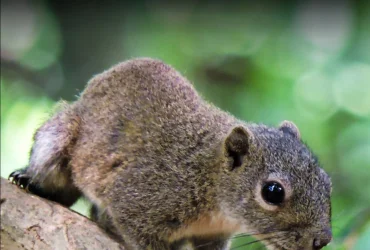 v10i1.254
v10i1.254ISSN: 1800-427X (print)
eISSN: 1800-427X (online)
DOI:10.47605/tapro.v10i1.254
Submitted date: 19 December 2020
Published date: 27 May 2021
Pp. 79.
ERRATUM :Gowande, G.G., S.R. Ganesh and Z.A. Mirza (2020). A new cryptic species of bush frog (Amphibia: Anura: Raorchestes) from the Southern Eastern Ghats, India. Taprobanica, 9 (2): 164–173 + pls. 49–50.
eISSN: 1800-427X (online)
DOI:10.47605/tapro.v10i1.254
Submitted date: 19 December 2020
Published date: 27 May 2021
Pp. 79.
ERRATUM :Gowande, G.G., S.R. Ganesh and Z.A. Mirza (2020). A new cryptic species of bush frog (Amphibia: Anura: Raorchestes) from the Southern Eastern Ghats, India. Taprobanica, 9 (2): 164–173 + pls. 49–50.
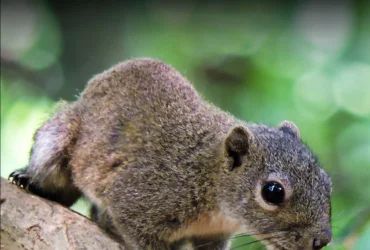 v10i1.253
v10i1.253ISSN: 1800-427X (print)
eISSN: 1800-427X (online)
DOI:10.47605/tapro.v10i1.253
Submitted date: 9 April 2021
Accepted date: 10 May 2021
Published date: 27 May 2021
Pp. 71–78, pl. 16.
On large colonies of rufous horseshoe bats (Rhinolophus rouxii), western Sri Lanka
A.P.M.J. Bandara* & G. Edirisinghe
*E-mail: malshabandara83@gmail.com
Rhinolophus rouxii and Hipposideros speoris are small-sized bats belonging to the Rhinolophidae and Hipposideridae families, respectively. Rhinolophus rouxii is widely distributed in Sri Lanka, India, Nepal, China and Vietnam, whereas H. speoris is found in Sri Lanka, India and more recently reported from Myanmar. These two species are listed as of Least Concern in both Global and National Red Lists of IUCN. As per the existing distribution records, they are commonly found in the low country: R. rouxii up to an elevation of 1,590 m, whereas H. speoris is at altitudes ranging up to 1,385 m.
Section Editor: Burton Lim
eISSN: 1800-427X (online)
DOI:10.47605/tapro.v10i1.253
Submitted date: 9 April 2021
Accepted date: 10 May 2021
Published date: 27 May 2021
Pp. 71–78, pl. 16.
On large colonies of rufous horseshoe bats (Rhinolophus rouxii), western Sri Lanka
A.P.M.J. Bandara* & G. Edirisinghe
*E-mail: malshabandara83@gmail.com
Rhinolophus rouxii and Hipposideros speoris are small-sized bats belonging to the Rhinolophidae and Hipposideridae families, respectively. Rhinolophus rouxii is widely distributed in Sri Lanka, India, Nepal, China and Vietnam, whereas H. speoris is found in Sri Lanka, India and more recently reported from Myanmar. These two species are listed as of Least Concern in both Global and National Red Lists of IUCN. As per the existing distribution records, they are commonly found in the low country: R. rouxii up to an elevation of 1,590 m, whereas H. speoris is at altitudes ranging up to 1,385 m.
Section Editor: Burton Lim
Hubungi Kami
The ultimate aim of the journal is to provide an effective medium for communication of the latest and best scientific information.
Copyright © 2020 Taprobanica. All Rights Reserved
Jasa Pembuatan Website by IKT




